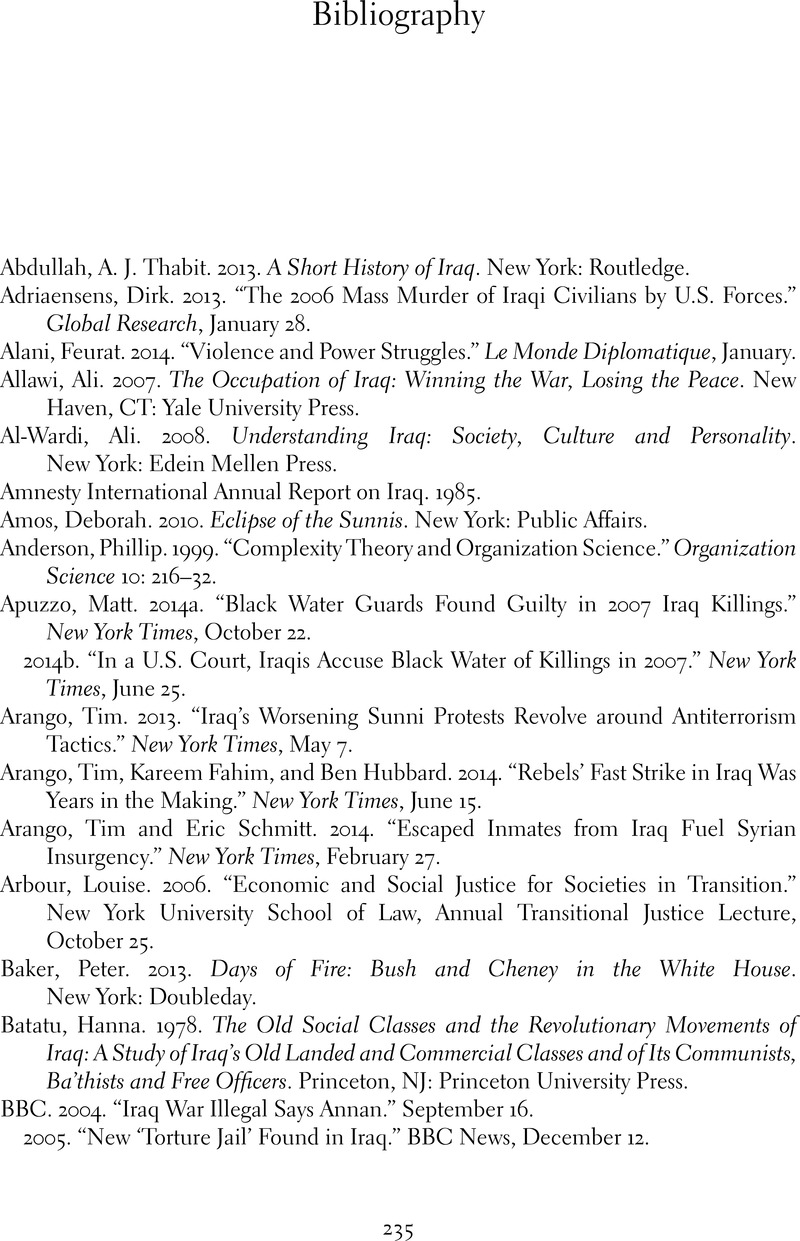Bibliography
Published online by Cambridge University Press: 05 July 2015
Summary

- Type
- Chapter
- Information
- Iraq and the Crimes of Aggressive WarThe Legal Cynicism of Criminal Militarism, pp. 235 - 246Publisher: Cambridge University PressPrint publication year: 2015



